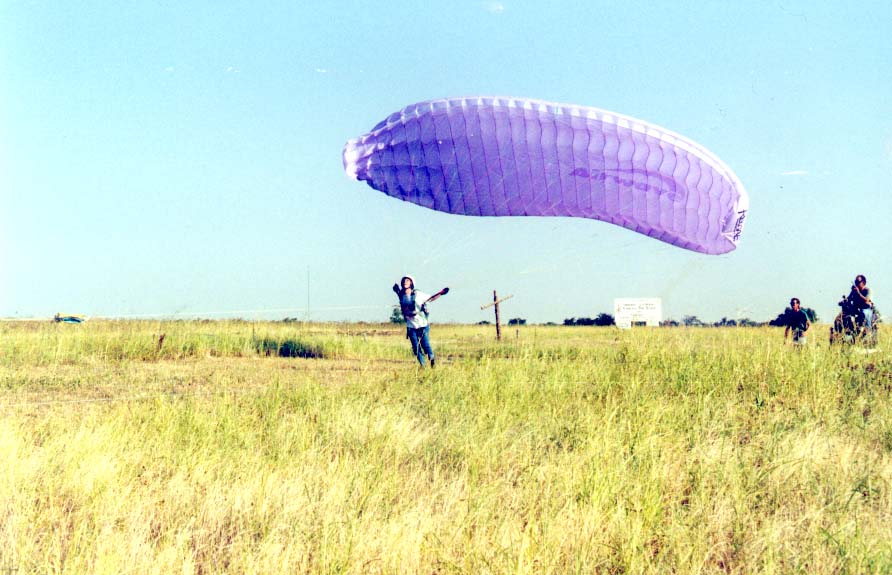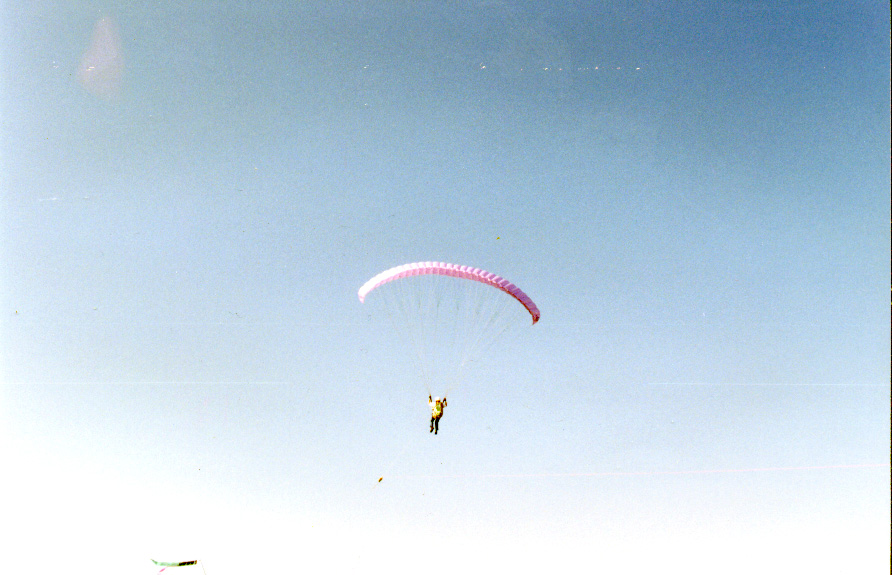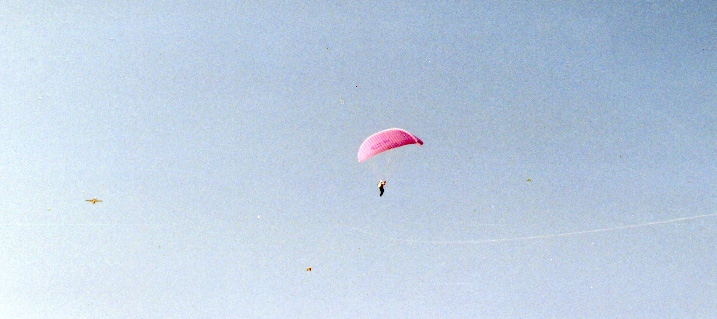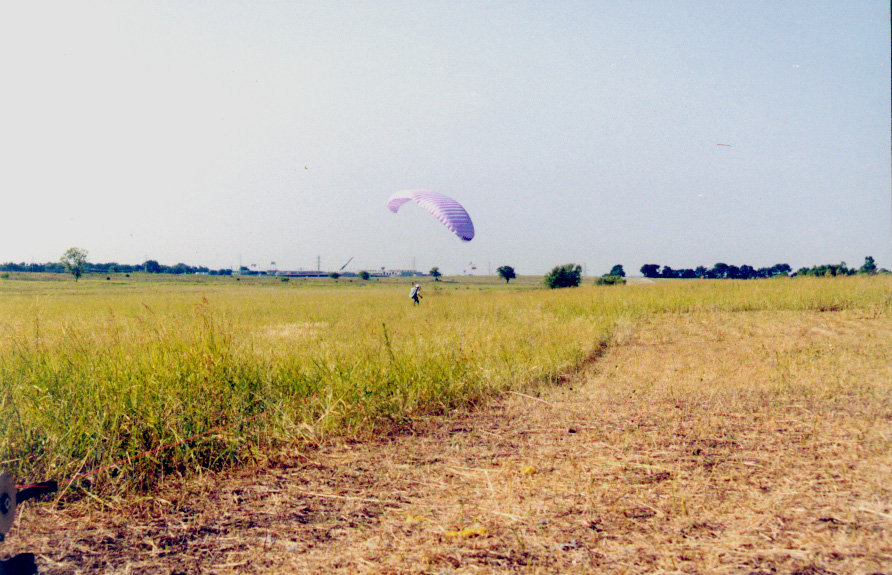
Enter the scooter tow. A Honda scooter is mounted on a trailer, with both of the wheels removed. The rear wheel is replaced by a metal drum. Two or three thousand feet of rope is spun onto the drum. The rope comes off the bottom of the drum, goes under the scooter, exits out the front and stretches across a large open field. At the far end of the field, the rope goes through a pulley on the back of a parked truck and then heads back to the scooter.
The pilot is attached to the tow rope and the scooter is then used to pull the rope in, which causes the pilot to be pulled away (towards the truck and pulley) and up (because of the wing, whether it's a paraglider or a hanglider).
This series of photos is from one of my earlier lessons. Here, I'm getting some last-minute instructions from my teacher, Dave Broyles of Kite Enterprises, while his assistant instructor, Hugh Ross looks on. The paraglider canopy is carefully laid out behind the pilot for launch. Meanwhile, spectators and flyers waiting their turn take a rest on the scooter-tow trailer.

Next, Dave gets on the scooter and I let him know that I'm ready to go. (No, that cross you see is not there to commemorate the tragic loss of life of a pilot who crashed; some church is supposed to be built there, someday.)

Dave "puts on tension" on the tow rope by slowly adding throttle. The pilot is pulled forward by the tow rope and begins to run, while pulling the risers that are attached to the leading edge of the canopy up and forward. As the canopy rises above, the pilot checks it to make sure it has come up and has inflated fully and properly. If there are any problems with the canopy or the lines, the tow is aborted.

Once the canopy is inflated and flying and pointed in the right directon (straight down the tow rope, not into the wind, which might very well be cross), Dave adds more power and the pilot and canopy leave the ground.
There are a few interesting things to point out in this next photograph. First, note the small dot in front of and slightly below me. That's a parachute tied inline to the tow rope, which you can't see in the photo - after I release, the parachute inflates and slows the rope's descent, which makes reeling it back in easier.
Second, you can see that my wing is pointing off to the right just a bit. It's trying to point into the wind, but I want it pointed straight down the tow rope, since that's where I'm going. I'm starting to lean (seat steer) to get the canopy straight again. If seat steering isn't sufficient, I can use left-brake to turn the glider with more authority. Letting the wing get turned too far away from the direction of the tow can result in a lockout which can in turn lead to a collapsed canopy. The tow operator must be vigilant, especially with inexperienced students; if a lockout occurs, the tow is halted and the line may have to be cut to prevent an accident.
Finally, that's our wind-streamer that's leaning over down on the ground. It's extremely important to know the wind direction when launching and landing, in order to avoid being injured or killed. That day was a great day for studet flying - the wind was light and not too cross from the direction of our tow.

There's not much to say about this one. I just keep getting higher and higher...

Okay, I've gotten high enough and have just released from tow. I signal the tow operator when I want to release by making a scissoring motion with my legs. As soon as I'm off of tow, I turn to head back over to the launch/landing area. I'm only up a few hundred feet, and I want to make sure I have enough altitude to glide back. No one wants to have a long walk carrying their glider! You can often get over 900 feet above ground level with the scooter tow system.
You can't really see it very well, but there's a small airplane a couple hundred feet above me (to the left of me in the photo) who passed me right after I released. I hadn't seen him while on tow and was a ltitle bit surprised (but there's a grass-strip airport right next to where we fly, so it's not unusual to have powered aircraft in the area).

I've flown back around now and am turning to line up for my landing. Note the trailing right edge of my canopy - I have brake applied on that side to turn me to the right.

Oops. I overshot a little, so I had to walk a ways anyway. I wanted to land in the mowed-down section of grass. When you're learning though, there are a lot of important things to concentrate on and hitting your spot is the least of them. Any flight that ends in a safe landing is a good one.

That's it. Thanks to Theresa and Andy Austin for taking these photos.
For more fun information about flatland flying, check out the
North Texas
Hang Gliding Association. The canopy I was using when these
were taken belongs to Marina Gerson (the blonde woman sitting on the
trailer in the first picture). She's the one who got me interested
in flying originally - I thought she was crazy when she took it up!
But then I saw the light and now I'm totally hooked.